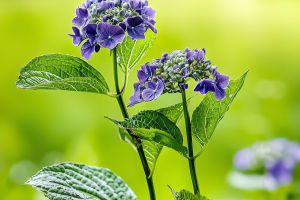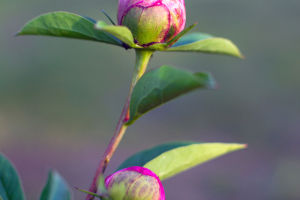Most mushrooms thrive in environments with decaying organic matter, and dead leaves or branches offer an ideal substrate for their growth.
These materials are rich in nutrients that fungi can break down and use for sustenance.
Unlike plants, which require sunlight for photosynthesis, mushrooms, as fungi, obtain their nutrients by decomposing organic material. Dead leaves and branches provide a constant source of organic matter that is in the process of breaking down, making them perfect for mushrooms to grow on.
When a leaf falls from a tree, it decomposes, providing a fertile ground for mushrooms. The process of decomposition is primarily carried out by microorganisms like bacteria and fungi, which break down the complex organic compounds in the leaves into simpler forms.
These simpler compounds are then absorbed by the fungi, supporting their growth. The fungi feed on the decomposing matter, eventually producing fruiting bodies, which are the mushrooms we see above ground.
Similarly, dead branches, which may fall from trees or be broken off by natural forces like wind, also provide an ideal environment for fungi to thrive.
The reason why mushrooms are so commonly found growing on dead leaves and branches is largely due to their role in nature's recycling system. Decomposition is an essential part of the ecosystem, as it helps to break down and recycle organic material into valuable nutrients that can be reused by other organisms.
Mushrooms play a key role in this process by breaking down wood, leaves, and other plant matter that would otherwise take much longer to decompose. The enzymes produced by the mushrooms help break down the tough cellulose in plant material, speeding up the recycling of nutrients back into the soil.
In forests, where the layers of dead leaves and fallen branches accumulate over time, the environment is especially conducive to mushroom growth. These areas are typically damp and shaded, which are perfect conditions for fungi.
Mushrooms generally prefer moist environments, as water is necessary for their growth and reproduction. When rain falls, the moisture not only nourishes the mushrooms but also helps activate the spores, causing them to germinate and grow.
During the humid spring and fall months, mushrooms are most likely to flourish, as the abundance of moisture combined with the decaying organic matter creates an ideal habitat.
The variety of mushrooms that grow on dead leaves and branches is extensive. Some species, such as the common oyster mushroom, can thrive on decaying wood, while others, like the chanterelle, may be found in leaf litter.
Each type of mushroom has adapted to its specific environment, with some species favoring the decaying leaves of certain trees, and others growing best on the bark of dead branches.
Over time, mushrooms have evolved various strategies to spread their spores, ensuring that their species continues to grow and reproduce in new areas. These spores, often microscopic, are carried by the wind, and when they land on suitable decomposing material, they can begin the process of germination and growth.
Mushrooms growing on dead leaves and branches are not just important for their role in decomposition but also provide benefits to other creatures in the ecosystem.
Many insects, such as ants and beetles, are attracted to decaying organic matter and may feed on the mushrooms themselves or the microorganisms living on them.
Small mammals, like rodents, may also use mushrooms as a food source. In turn, these creatures help spread mushroom spores to new areas, aiding in their proliferation.
In addition to the ecological benefits, some mushrooms that grow on dead leaves and branches are valued by humans for their culinary and medicinal properties. Certain varieties, such as shiitake and maitake, are highly prized in cooking, while others are used in traditional medicine for their purported health benefits.
The fact that these mushrooms thrive on organic waste material highlights the efficiency of nature's systems. By growing on decaying matter, mushrooms help clean up the environment while providing valuable resources for both wildlife and humans.
Dead leaves and branches create a rich, nutrient-dense environment perfect for mushroom growth. As decomposers, mushrooms play a vital role in breaking down organic matter and recycling nutrients back into the ecosystem.
The symbiotic relationship between mushrooms, dead plant material, and other organisms helps maintain the health of natural habitats, ensuring that the circle of life continues in the forest and other ecosystems where mushrooms grow.


